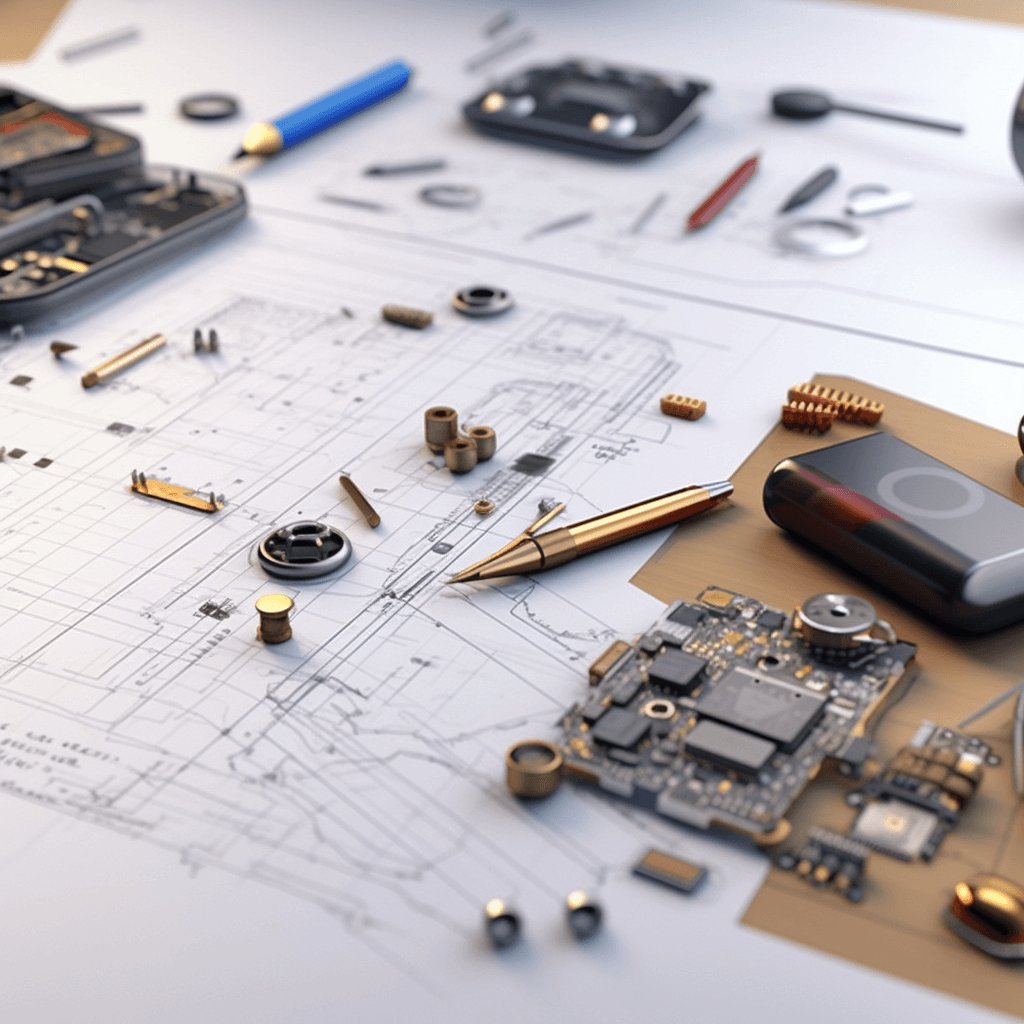

When your company's ideas are used without permission, you risk financial loss and loss of market position. This article will show you how to effectively protect your intellectual property and prevent copyright infringement.
Intellectual property is the rights that a person or company has to its work or invention. A work can be, for example, a literary work, a film, a computer programme, and an invention can be a machine, an electronic, medical or chemical device. Each of these works is the subject of an intellectual property right. The owner of such rights has the right to decide how and by whom they will be used, and to charge for their use.
Protecting intellectual property is important because creators and innovators want to be in control of their creations and inventions and want to benefit financially from them.
Protecting intellectual property is important is often a competitive advantage. Firstly, it enables creators and innovators to profit from their work. Owners of patents, copyrights and trademarks can make money from the use of their works by other people or companies. Without intellectual property protection, companies and creators would have no incentive to invest in research and development of new products and services.
Secondly, IPR enables the quality and prestige of the brand to be maintained. Companies that do not protect their trademarks are vulnerable to unauthorised use of their brand by other companies. This can lead to consumer misinformation and, consequently, a decrease in brand trust.
Thirdly, the protection of intellectual property enables competition to be maintained in the market. In the absence of intellectual property protection, it is easy for companies to copy the ideas of others and market cheaper products or services. The consequence is that the motivation to innovate is reduced and technological progress is stunted.
- Registration -
The most important step in protecting intellectual property is to register it with the relevant authority. In the case of inventions, this is the Patent Office. In this way, the inventor has an official document that confirms that he or she owns the patent rights and also has a basis for action in the event of infringement. Copyright, on the other hand, does not require registration. A work, i.e. a graphic, a photograph, music, is subject to copyright from the moment it is created, even if it is in unfinished form.
- Permitted use -
Permitted use is a concept that refers to the use of another's intellectual property on a basis that is considered fair. This may include, for example, the use of short extracts of text or images for educational or critical purposes. In the case of fair use, the consent of the rights holder is not required, but certain conditions must be observed, such as the purpose and type of use.
- Confidentiality agreement -
A confidentiality agreement is a document that commits the parties to secrecy regarding certain information, including intellectual property. Rights holders may require employees, business partners or contractors to sign such an agreement to protect their secrets from disclosure.
- Monitoring -
Intellectual property companies offer internet monitoring services. These consist of regular searches of the internet for copyright or patent infringements. Rights owners can also monitor their works or inventions themselves to detect infringements and take appropriate measures.
- Legal protection measures –
In the case of copyright or patent infringement, the right holder can take various legal steps, such as going to court, ordering an injunction or demanding damages. If this is the case, it is advisable to enlist the help of an intellectual property lawyer.
This blog post may be of interest to you: The value proposition, or what to do to get customers to like your new product
Intellectual property rights include copyright (including author's economic rights) and patents and trademarks (under industrial property law).
- Copyright -
Under copyright law, a work must: be a manifestation of creative activity. Copyright applies to works that are protected, such as books, films, musical works, photographs, computer programs or graphic designs. They give creators the right to decide how their work will be used and to charge for its use. By contrast, economic copyright concerns the economic aspects of the use of works (e.g. copying, distribution, etc.).
- Patents -
A patent is a document that proves that an invention is novel, can be used in any industrial activity and is protected. The patent owner has the right to decide who can use the patent and how it can be used, and to charge fees for its use.
- Trade marks -
Trade marks are one of the key elements that make up industrial property law. It is a symbol that is used to identify products or services. This can be a logo, name, slogan or design. The owner of a trade mark has the right to decide how and who may use it, and may also charge for its use. Trade marks serve to distinguish the goods of one company from those of another.
- Industrial design rights -
Industrial design rights relate to the appearance and shape of products such as shoes, furniture or cars. They give the owner the right to decide who can use their design and how they can use it, as well as charge for its use. The registration of industrial designs is based on the international design classification system operated by the World Intellectual Property Organisation (WIPO).
Intellectual property protection is extremely important for creators and innovators as it enables them to control their creations and inventions and benefit financially from them. Owners of such rights should register them with the relevant authority, use confidentiality agreements, monitor their works and inventions, and take appropriate legal action in the event of infringement. It is also worth bearing in mind the different types of intellectual property, such as copyrights, patents, trademarks and design rights. This enables creators and innovators to protect their creative and intellectual endeavours and exploit them in a way that benefits them financially.
With the development of technology and globalisation, the protection of intellectual property is becoming increasingly important. Rightsholders should therefore be aware of the dangers of online copyright and patent infringement, such as digital piracy, identity theft, fraud and counterfeiting.
In addition, in an age of advances in technology and artificial intelligence, there are also new challenges to protecting intellectual property, such as the development of algorithms that can generate content and inventions, and the automation of creation and production processes, which can lead to easier copyright and patent infringement.
Consequently, the protection of intellectual property will require constant adaptation to changing technological and legislative realities. It is therefore advisable to keep up to date with changes in the law and take expert advice to ensure that you have the best protection for your works and inventions.
In summary, intellectual property protection is essential for creators and innovators to protect their rights and control how their works and inventions are used. It is therefore advisable to register your rights, use confidentiality agreements, monitor your works and inventions, and take appropriate legal action in the event of infringement. In this way, creators and innovators are able to benefit financially from their creative and intellectual endeavours.
If you are keen to protect your intellectual property effectively, it is advisable to engage the services of an experienced lawyer specialising in this area. Hiring the right professional will help you avoid many unpleasant situations and safeguard your rights. On the other hand, if you want to use the potential of new technologies and gain a competitive advantage, then talk to our expert. Our specialists will help you understand the latest trends and choose the best solutions to give you a competitive edge.
Do you want to innovate, improve your product or service? Fill in the form and speak to our expert. We will help you research the needs of your customers and select solutions that will give you a competitive advantage.

Designing innovations | 12.06.2023
Market research is an essential part of any company’s success, regardless of industry or size...

Designing innovations | 24.05.2023
Key Elements of New Equipment Design Designing a new device is a process consisting of...

Trendy | 04.03.2023
Horizon Europe 2021-2027 – the largest programme of supportfor innovation Today, innovation has become a...